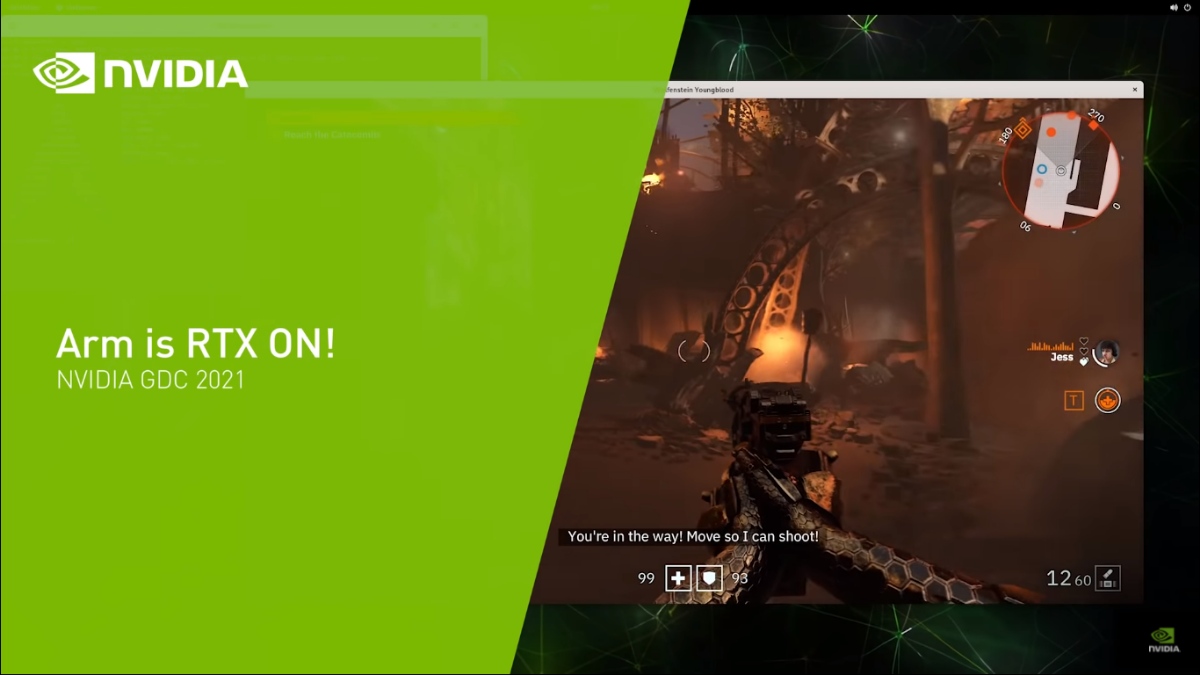Nvidia showed A Glimpse Of Ray Tracing & DLSS On ARM CPUs

During the GDC conference, Nvidia showed off what it’s been working on—unveiling how Ray Tracing and DLSS tech would expand to the ARM architecture-based CPUs. Interestingly, this is the first time Nvidia has shown that its power-demanding tech like DLSS & Ray Tracing can work on power-efficient ARM CPUs.
What’s even interesting about this feat is that the ARM Chips are mainly used in smartphones and low-powered laptops; Unlike the x86 architecture-based processors by Intel and AMD, which are widely used in a gaming PC.
To demonstrate the DLSS and Ray Tracing working on ARM CPU, Nvidia displayed two gameplay videos running in real-time on an RTX 3060 GPU coupled with a MediaTek Kompanio 1200. The two games being, Wolfenstein: Youngblood and The Bistro; you can watch the video below. Moreover, “The Bistro” is a demo from Amazon’s Lumberyard game engine.
Other tech that Nvidia added
The video shows these two games running real-time DLSS and Ray Tracing on ARM CPU. In addition, the RTX direct illumination (RTXDI) and Nvidia Optic AI-acceleration denoiser (NRD) were both turned on.
Of course, this was made possible by porting many RTX SDKs to ARM chipsets. Along with this, there’s good news for developers. Nvidia said that RTXDI, NRD, RTXMU SDKs (RTX Memory Utility) are coming for ARM and Linux-based devices. However, there’s still time for RTXGI (RTX Global Illumination) and DLSS to arrive.
Now the question arises, when will we get to see ARM laptops boasting Nvidia’s RTX? As soon as the manufacturers decide to start rolling out ARM-based laptops rocking an RTX GPU. Our guess, pretty soon.
However, one thing is certain from this presentation. The possibility of opportunities for game developers to further expand the better gaming experience on a variety of devices, ARM and Linux included. Incidentally, all this could be seen coming since Nvidia’s acquiring of ARM last year.






